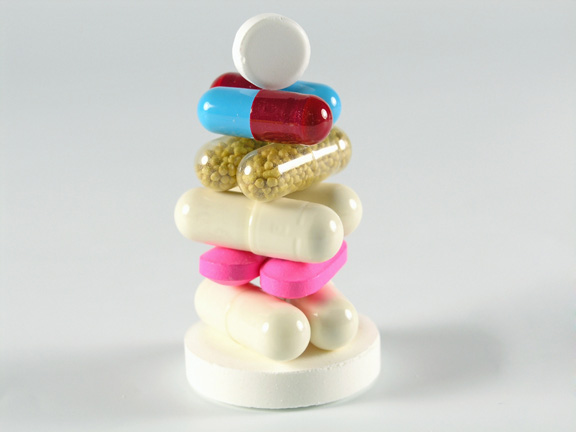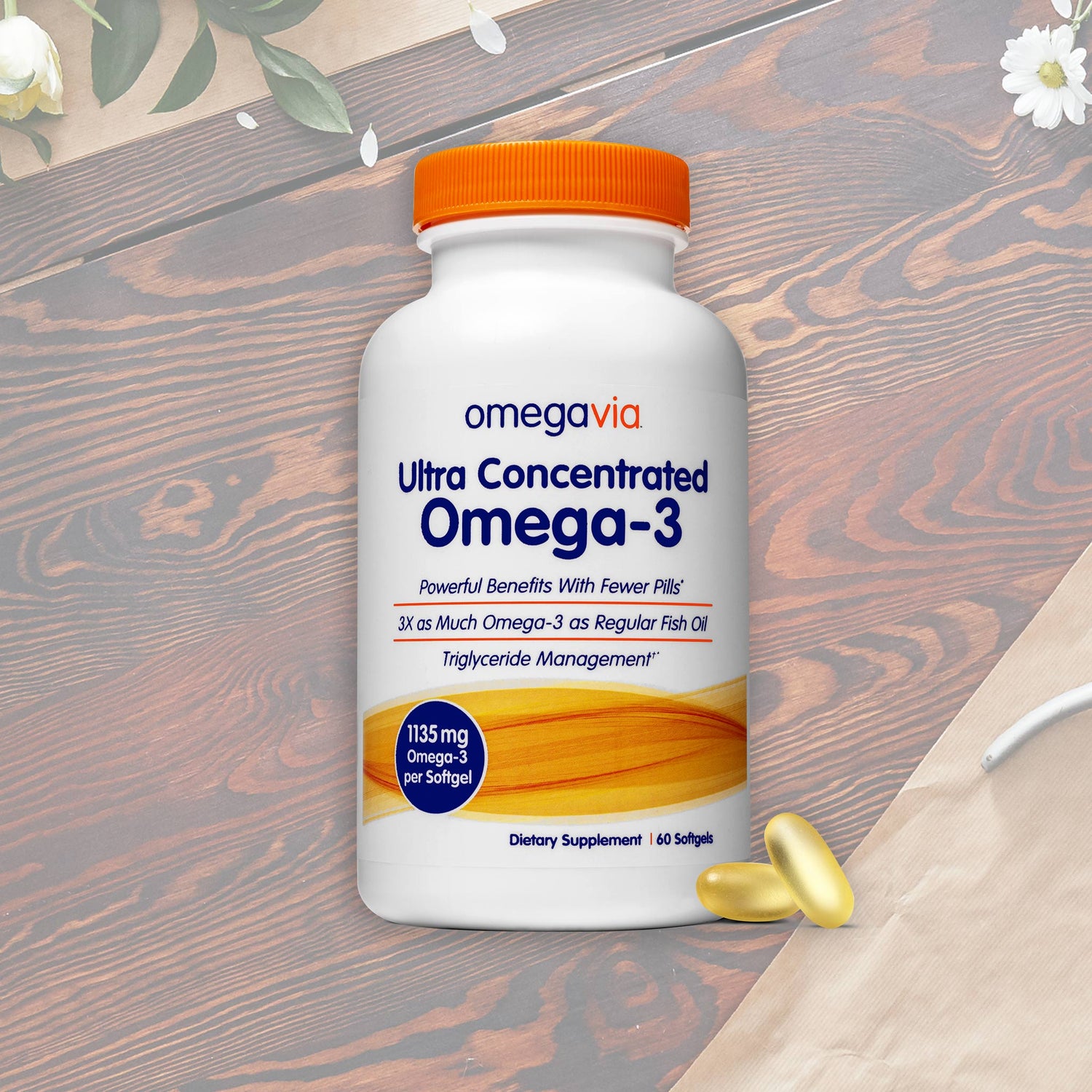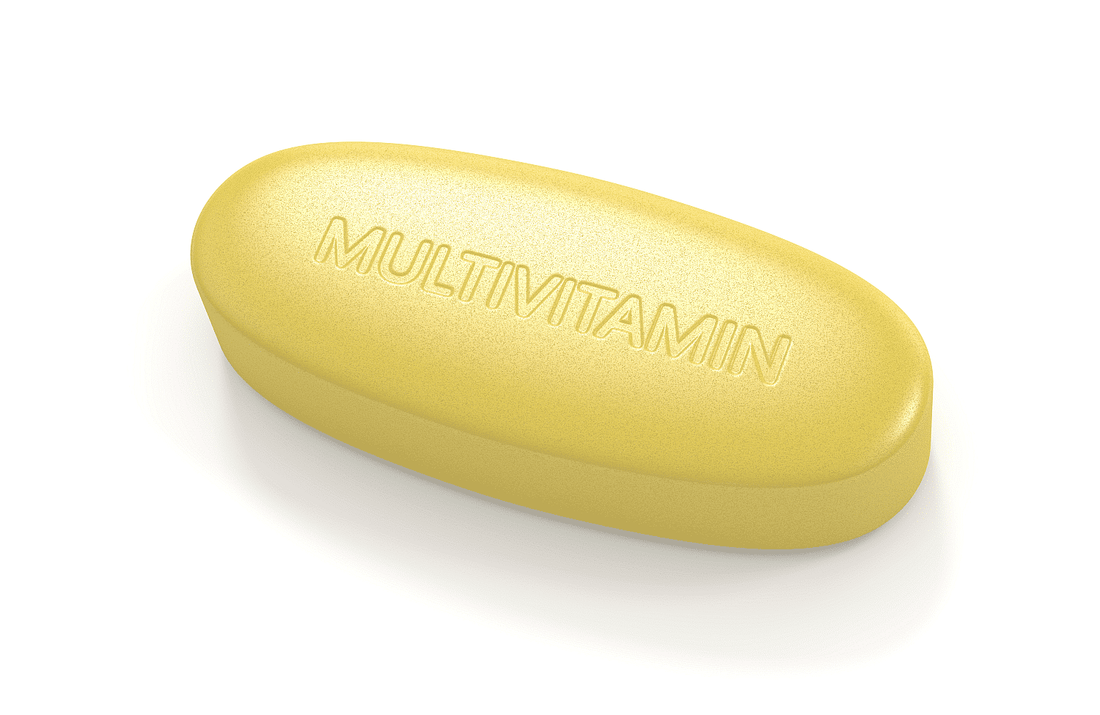 Multis are gateway supplements.
They're often the first step in people's health enlightenment. Along with a gym membership, maybe. Or a pedometer.
But there are a lot of people for whom a multivitamin is it. No other supplements, diet change or exercise. That's all they're willing to do. They couldn't quit smoking, so they'll take a multi instead. Or their spouse is on them to get healthy.
So they buy a giant bottle of multi at Costco. Centrum. One-A-Day. Or (ha!) an 'adult gummy.'
Good for them. You're not them.
But seriously, if you're taking an adult gummy vitamin, stop it. Just stop it.
Multis are gateway supplements.
They're often the first step in people's health enlightenment. Along with a gym membership, maybe. Or a pedometer.
But there are a lot of people for whom a multivitamin is it. No other supplements, diet change or exercise. That's all they're willing to do. They couldn't quit smoking, so they'll take a multi instead. Or their spouse is on them to get healthy.
So they buy a giant bottle of multi at Costco. Centrum. One-A-Day. Or (ha!) an 'adult gummy.'
Good for them. You're not them.
But seriously, if you're taking an adult gummy vitamin, stop it. Just stop it.
Is there one multi or supplement pill that has it all?
You want a good multi so you don't have to take so many pills. You may even take an Omega-3. You may be considering taking Vitamin D3 or a probiotic. This is when the hunt for a good multi heats up. I get a lot of questions about which multi to choose. I don't like multis and I don't take one. But, if your doctor wants you to take a multi, take it...there is no need for discussion.Why I don't recommend taking multivitamins:
Several reasons:- Multis often have the wrong TYPE of nutrients
- Multis often have too little of some and too much of other nutrients, contributing to nutrient imbalance
- Multis are never complete or comprehensive
- '100% Daily Values of everything' can give you a false sense of dietary accomplishment
- You can still have several deficiencies after taking a daily multi
1. Vitamin A
Many multis have beta-carotene as a Vitamin A source. Beta-carotene is not Vitamin A but a precursor to it. Some people convert it to Vitamin A and some don't. You need the retinol form of Vitamin A, not the carotenoid forms.* Severe Vitamin A deficiency is rare in America, but it is very common in developing countries and causes night blindness. Just because things aren't that bad here does not mean things are peachy. Since we stopped eating egg yolks, butter, liver, and animal fats in the 70s and 80s, we have collectively been consuming a lot less retinol Vitamin A. Mass market multis are hopeless sources of Vitamin A. Eat the foods listed above. If you don't eat liver, take 10,000 IU of preformed Vitamin A from a product like this. 10,000 IU is not too much assuming you get plenty of sun exposure or take Vitamin D3 too. Keep in mind that disease-free cultures like pre-westernized Inuits used to consume between 30,000 and 40,000 IU of retinol Vitamin A daily. People are unnecessarily worried about Vitamin A toxicity…something that happens usually when you're Vitamin D deficient. If you have enough Vitamin D, the toxicity level of Vitamin A is about 200,000 IU per day. What I do for the kids: we blend in grass-fed beef or bison liver with hamburger meat. No one's the wiser. I also get them this liver + beef snack from Epic. It's actually pretty good.2. Folic acid
Multis have folic acid. Multis should have FOLATE, the metabolic active form of folic acid. We were all told that pregnant women need folic acid. Never mind that you need FOLATE, not folic acid. And that you need it 3 months BEFORE pregnancy as much as you need it for 3 months after conception. So starting with folic acid during your second trimester is missing the boat.* Folic acid in multis is synthetic and needs to go through five different enzymatic conversions before it becomes folate. This conversion declines as we age. Even if you're not pregnant, folic acid must be converted to folate before it can reduce homocysteine, a risk factor for poor heart health. There are implications for mood disorders too, as folate is required in processing brain neurotransmitters. The folic acid in your multi may not be doing much for you. B-Right is my preferred source of folic acid, but I find it too strong. My stomach feels queasy after an hour or two, so I open the capsule and pour half of the contents into another empty capsule, splitting the contents of each capsule over two days. But that's a lot of work. A half-strength B-Right would be nice. This situation is the result of consumers buying stronger or bigger dosages, believing 'more is better.' Businesses realize that consumers prefer higher potency formulas and respond by making stronger and stronger formulas. Consequently, there's an arms race afoot that is not based on science but consumer psychology. The branded Metafolin form of Folate is generally considered better than Folic acid. However, there is some risk associated with higher doses.3. Vitamin D
Most multis have very low levels of D3. Some even have the poorly-absorbed D2 form. Get your blood level tested and supplement to get up to optimal levels. Most people need between 2000 and 5000 IU of D3 per day along with Vitamin A (see above.) Unless you're getting a lot of full body summertime sun exposure and eating a lot of seafood, you're going to need supplementation. Following the FDA's 100% Daily Value (600 IU per day) is virtually guaranteed to keep you deficient.* If you're dark skinned or pregnant, you will need more than what most multis or prenatals provide. Taking Vitamin D without A and K2 is a bad idea. My preferred source.4. Vitamin K2
Most multi buyers haven't even heard of Vitamin K2. How can you be sure you're buying the right K2 supplement. Your body needs K2 to figure out what to do with calcium. K2 keeps calcium in your bones and teeth instead of in soft tissues like your arteries.* Vitamin K2 is absent in most multis. Some 'health food' multi brands now have K2 in the MK-7 form. That's nice, but what you really need is MK-4. Want K2? Eat dairy fat from cows that recently ate rapidly growing green grass. Or eat european hard cheeses and pastured egg yolks. If you're pregnant, MK-4 is essential and MK-7 may be useless for the baby's development. Strangely, I've yet to see a prenatal that contains MK-4 form of K2. It is critical for the baby's bone and skull development. And virtually every pregnant mother is deficient. In retrospect, I'm really glad my vegetarian wife developed a pregnancy craving for meat and european hard cheeses. Most multis have K1, a nutrient that is almost impossible to become deficient in because it is recycled by the body. It does not help that the FDA and the Institute of Medicine are decades behind and have not established a formal daily value for K2. You need between 500 - 1000 mcg of K2 daily, most of it in the MK-4 form and some in the MK-7 form.* This is a good liquid form for kids. Our sister brand (InnovixLabs) makes this. There is a trend here that some of you may have noticed. Three of the 4 nutrients discussed so far are fat-soluble vitamins. Nutrients that we all began going deficient in when we started avoiding fats and meats.5. Magnesium
None of the mass market multis have enough magnesium. Centrum has 50 mg (13%) of Daily Value as magnesium oxide. Perfect example of wrong quantity and wrong type. One A Day has 140 mg (35%) as magnesium oxide. You need 400 to 600 mg of magnesium daily. Very few of us get this much magnesium in our diet, even with a near-perfect diet. Our soils are depleted from intensive agriculture. Our bodies burn through magnesium due to high-stress lifestyles.* No wonder we are cranky, sleepless, and anxious. This is one nutrient that I think all of us need to supplement. Magnesium oxide is close to useless. You might as well swallow a pebble. Sadly, it is found in all the biggest-selling multis and magnesium supplements. Magnesium citrate is a little better. But you're best served by far better absorbed forms like glycinate, malate, threonate, lysinate. All the well-absorbed forms are fluffy and light - so you'll need a lot pills to get 600 mg a day. A few options available on Amazon: Powdered magnesium glycinate - nice to blend into your smoothie or beverage for kids. Capsule form with malate and glycinate formsA few more reasons:
The FDA has known how critical choline is, especially during pregnancy. They've had the data for 20 years. But have done nothing with it.* In the meantime, 90% of pregnant women are deficient in choline. Where do you get choline? Yup - meats, egg yolks, and animal products. All things the government told us to avoid. Then there's Vitamin E. Vitamin E is actually a complex of 4 tocopherols and 4 tocotrieneols. What you find in multis is the synthetic version of one of the tocopherols. I've yet to see a multi with all eight Es. In the meantime, try this supplement. Most multis have B12 in the cyanocobalamin form. It should be in the methylcobalamin form. These are some (but not all) of the reasons why I don't take a multivitamin. There are other reasons, but I think you get the drift.Oh, but the multi I get at Whole Foods has food-based synergistic cofactors!
Sure. Some are a little better. I'll give you that. Some of them have B12 as methylcobalamin. Some throw in the wrong kind of K2. They have natural Vit E. But for the most part, health food multis make you feel special by throwing in 'proprietary blends' of antioxidants or fruit and veggies extracts or intangible mumbo jumbo blends. The purpose of these blends is to separate one product from another on the shelf. Holier-than-thou health food store multis also have long lists of things they do not contain, starting with gluten. Not having gluten is great. But the internet has made false demons out of things like magnesium stearate and ascorbyl palmitate. Mag stearate phobia is not based on science, but fools fan the fears.Look to whole, nutrient-dense foods for nutrition
Take another look at egg yolks and liver. They're nature's multivitamins. If you're not OK with liver and organ meats, you need supplements. Go back to colorful berries. Fresh seafood and leafy greens. Locally grown fruits and nuts. Go back to butter. Maybe, just maybe, eat your liver and eggs in the midday sun in the backyard. Naked. You make Vitamin D for free and the neighbors move out in a hurry. It's a win-win. I know. Brilliant.*These statements have not been evaluated by the Food and Drug Administration. This product is not intended to diagnose, treat, cure, or prevent any disease.



